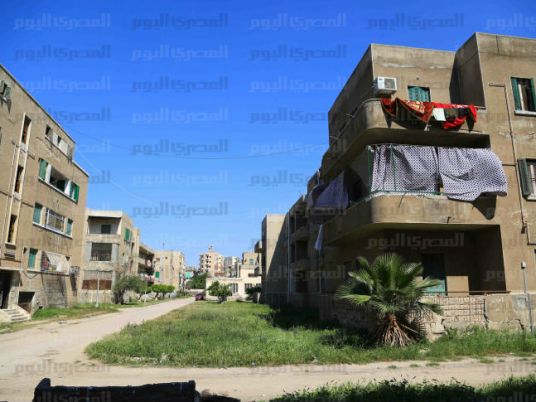
Mahalla, Kafr El-Dawar and Helwan were once beautiful industrial cities that were famous for the factories that were built in them, such as the Mahalla and Kafr El-Dawar spinning factories and the Helwan iron and steel factory. When they were built, the primary objective was to support the economy.

The state built neighborhoods for the workers to comfortably live in near the factories. They were clean places that had many types of services. There were also booths for fanfare orchestras to play music and entertain the workers and their families every week. Additionally, maintenance of the housing units was taken care of by the state, without any cost to the residents.
But just as the factories are now run down, those neighborhoods have become like slums.
On an area of 69 acres in Mahalla is one such neighborhood. It was initially built in 1941 to accommodate displaced migrants during the Second World War, but after the war the Mahalla factory took over the area for its workers. The employees were required to paid for their units from the profit sharing percentages they received.

Abdel Moneim Idris, a former Mahalla factory worker, said the company has been deducting 15 percent of his profit shares for 30 years to pay for his flat. “But this stopped in 1991 and I am now asked to leave,” he said. “And I am not the only one.”
Buthaina Ibrahim said other workers were given alternative units, but she was not, although her late husband had worked for the factory for 28 years. “I have no money to continue paying,” she said. “I cannot even afford to pay for my medications.”
The head of the Pensioners' Syndicate, Mohamed Wadi, said the government allocated LE50 million in 2010 to build more than 5,000 units for pensioners and their families. “But the revolution broke out a few weeks later and the project was forgotten,” he said. “Successive prime ministers promised to revive the project, but nothing has happened yet.”
The neighborhood of Kafr El-Dawar was also once a clean place. There were one-story buildings for the managers and two-story buildings for the workers to accommodate four families. All the units were built in the same style, with a garden in the back and a tennis court for each cluster.
If you were to go there now, however, you would see that the tennis courts are covered with garbage and the workers have built extensions in the backyard gardens.

The neighborhood in Helwan was built for the workers of the iron and steel factory. The units had a Russian design of six stories, with four flats on each floor.
Single workers were given a one-bedroom flat to rent and married workers were given a two- or three-bedroom flat, depending on the number of children they had. When a worker from that factory took their pension, the flat was returned to the company.
When the law was changed to allow workers to own their units, many sold them to non-employees over the years, thereby creating a neighborhood where few of the tenants were actual workers from the factory.
Edited translation from Al-Masry Al-Youm
